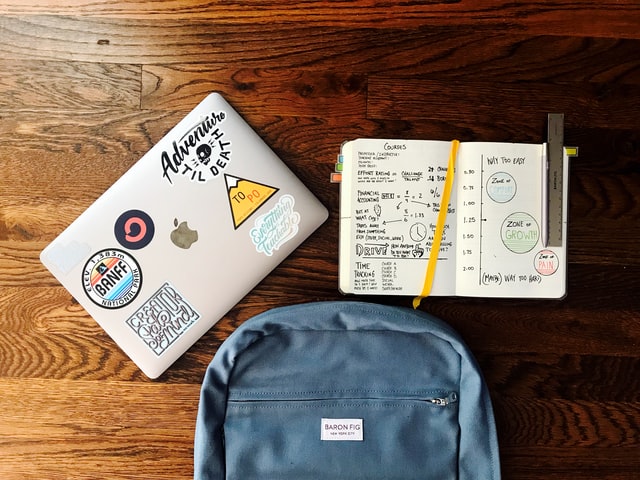
How technology helps students become better learners. Source: pexels.com
Long gone are the days when the Internet and smart devices were essentially banned from the education process. It’s a consensus now: the web itself and various apps and platforms powered by it can only enhance it.
Think back to your own experience. You probably had at least one teacher or professor who held a Kahoot quiz or showed you short videos from YouTube. Or, maybe, you’re that teacher or professor.
That’s not even to mention how deep this well of knowledge – i.e., the internet – is. All the information ever known to humankind is just a few clicks away from you, wherever you are.
And without the internet, students wouldn’t have a place to google “write my research paper for cheap”; they’d have to cram, cram, cram. Now, thanks to such services, they can focus on what matters more. How great is that?
But why exactly is technology such a great helper? Let’s do a deep dive into 5 ways it helps students get better at their main job – learning.

Source: unsplash.com
1. It provides unlimited access to knowledge
This is, probably, the thing that comes first to anyone’s mind. Without today’s technology, students would still have to go to the library and sit hunched over the books there. And, they’d be limited by the selection of books local libraries have to offer.
Now, your smartphone – which is with you 24/7 – also moonlights as the gateway into all of humankind’s knowledge. You can find research papers, textbooks, articles, and all kinds of raw data as easily as 1-2-3. (If you know where and how to look, of course.)
There’s just one pitfall that educators and learners should keep in mind. Not all the information on the internet is created equal. For example, you can find as many anti-vaccination claims as papers debunking these misconceptions.
So, critically evaluating the quality of the data is an irreplaceable skill. With enough guidance from educators, though, young people can master it in no time – they represent the online generation, after all.
2. It helps students focus on real-world problems
It’s not just the academic knowledge that’s easily accessible these days. You can find first-hand accounts of just about anything: what it’s like to work in the Arctic, how engineers build spaceships, you name it.
So, you can connect theory to practice in the real-world environment with such documentaries, YouTube videos, articles. And this connection is essential for closing the gap between the two – and for learners’ motivation to study.
For instance, let’s say you teach future ER doctors. Using such first-hand material will show what a day in the life of an ER doctor is really like. And it’ll also help students valorize their theoretical knowledge: they’ll see how vital it is to have that and know how to use it right.
And as a cherry on the top of the cake, learning through stories is a more efficient approach to education. Learners tend to retain information better when it’s presented through a story, as opposed to listing terms and facts.
3. It facilitates communication & collaboration
Have you seen those recent viral tweets? The ones where a professor describes how her students took lecture notes in one giant Google doc, with comments that grew into Q&A discussions?
It’s just one single example of how technology makes collaboration easier. Here are 3 more ways technology takes it to another level:
- Students can work on a project together without being in the same room, thanks to messengers and video calls;
- Trello and similar tools can be used for distributing tasks, setting deadlines, and tracking progress;
- Students can share additional sources on the topic in a group chat or elsewhere.
All of this equals more opportunities for project-based learning. More projects equals more skill development. And the more real-world skills students acquire by the time they graduate, the more employable they’ll be.
4. It can do wonders for student engagement
Having students sit in the classroom and listen to a lecture for more than an hour just doesn’t make sense anymore. Because, yes, they will get distracted and start scrolling their Instagram feed or playing a game online with a friend.
But before you rush into blaming technology for the short attention span, remember: the blame game won’t change the fact. The best any educator can do is accept this and adapt their teaching style to keep students engaged.
And this is where technology can be a game-changer rather than a destructive force. Here are just some examples of that:
- Have students share their ideas and answers to your questions in a common Google document;
- Create polls to gather thoughts and opinions on the topic at the beginning of the class – or to assess students’ learning needs;
- Make in-classroom quizzes with tools like Kahoot to test their knowledge;
- Play associations and brainstorm using an online mind map tool;
- Use gamification tools to create badges, awards, levels, etc. to make learning fun;
- Show a short YouTube video on the topic – and open up the discussion on it;
- Go on a Zoom Q&A session with a professional in the field.
5. It allows accommodating a variety of needs
Accounting for every learner’s needs and preferences is no easy feat. But technology opens up the door to so many different ways to teach and study. It’s now impossible not to find the right techniques and methods for every individual.
Here are 4 key ways how technology makes education more personalized than ever.
Various types of material. Some people prefer YouTube tutorials, others love podcasts. Some learn best when reading explainers from professionals in the field. And, now, everyone can find their most efficient way to learn.
Self-paced learning. Learning beyond the classroom can be done at any time of the day now. The internet doesn’t have strict working hours. So, students who are night owls can work on their assignments when they feel the most focused.
Additional information on-demand. If a student struggles with a particular concept and the curriculum materials aren’t enough, they can google it. Search results will have this concept explained in plenty of ways, and there’s always going to be that one that suits this particular person the best.
Individual approach to every student. Those tools for boosting engagement give every learner a chance to participate. Educators can then track everyone’s individual progress and help those learners who lag behind catch up with the rest of the class.

Source: unsplash.com
In conclusion
Technology has already changed the way people learn. Teaching and studying today and three decades ago would be two quintessentially different experiences. And, what’s exciting, there are still so many other ways technology can be a real game-changer.
But here’s the key shift: educators no longer have to play the role of the sole source of knowledge, the sage on the stage.
Instead, their role has evolved into being a facilitator, a guide for learners. They’re there to help students find their best way to learn, develop essential soft skills, and make the most out of the curriculum.
And it’s a safe bet to say, technology will remain an irreplaceable tool in their toolkit for decades to come.
SEE ALSO:









